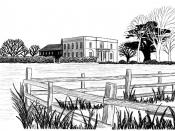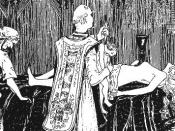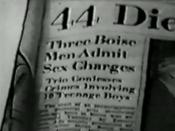The idea of moral panic was first widly introduced by Cohen in his paper 'Fork devils and moral panics' where he examined how police attempts to control youth culture in the 1960's only succeeded in more attention being focused on the sub-culture and in it escalating in popularity.
After initial clashes between the 'Mod's' and 'Rocker's' in the 1960's the media sensationalized and defined the two groups. They emphasised the differences between the two, which allowed them to be recognised and also for others to join. The 'Mod's' especially are said to have been a media creation, inspired by commercialism. The media were latter accused by many as encouraging the situation simply as they were short of news and such stories sold papers. The public reaction against this sub-culture was infact wildly out of proportion with the truth, but not with the facts portrayed by the media.
The model as Cohen showed it is biased on key factors.
Firstly a 'problem' is identified, this problem is then simplified due to the angle the media takes. A view is formed by the media and they portray or campaign an image of the problem; this in turn causes public outcry which escalates until the authorities are forced to respond; although this response, on occasion, has in itself been the instigator of another panic.
This process can be seen within society regularly. The abduction and murder of Sarah Pain in resent years began a moral panic with regards to the integration of paedophiles within our society. To begin with, as with many panics, this was the story of one families pain and loss; but due to the publicity of the search everyone came to know the plight of this child.
After the body was found and the nature of the crime made public...



Interesting
I thought this was an interesting, well thought out essay that covered the topic well in the word length.
5 out of 5 people found this comment useful.